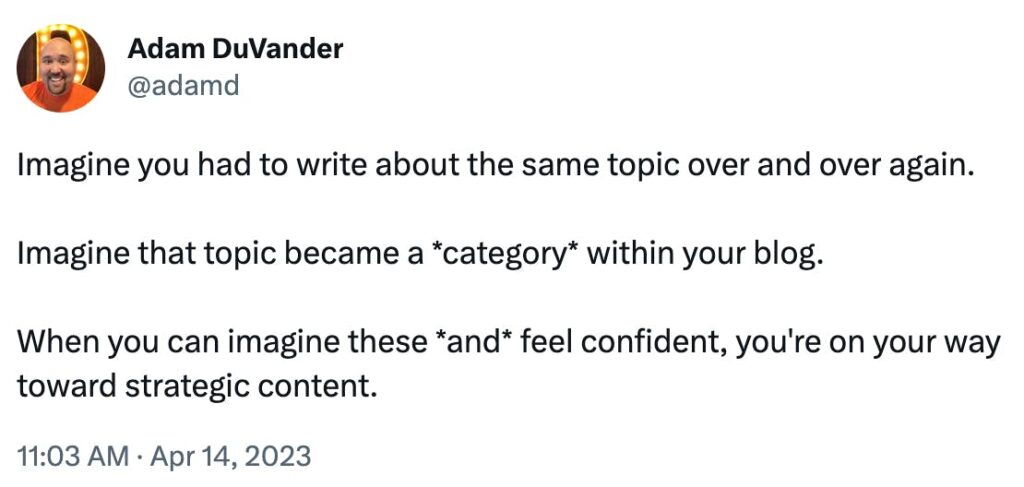Do you remember thumbing through the Sunday newspaper for the comics?
On a typical day, “the funnies” are tucked away on a back page. They’re printed in nondescript black and white.
But Sunday? They get their own section in full color:

As for the other sections I thumbed past to get to the comics? Those largely represent how the newsroom organizes itself: sports, business, metro, arts, and editorial, for example.
Within each section, there’s a further breakdown. Often, we see this categorization on their websites. The New York Times lists 16 sections on its homepage.

Within sections, certain reporters will cover areas called “beats.” The size of the organization determines how many beats can be covered, or how granular the publication can be with its beats.
Sadly, I don’t think the comics beat is available.
But there is a lot to learn from how journalists organize their newsrooms.
These sections and beats help them know what to cover… and, as importantly, what not to cover.
You can think of them like blog categories, as I described recently on Twitter:

More strategic content comes when you develop concepts before topics: repeatable themes that can include multiple pieces of content.
My latest post explains how you can use concepts to:
- Publish more successful content
- Easily identify your next topics
- Produce less content overall
Perhaps it’s my past in journalism that has encouraged this approach. Or maybe it’s because we’ve seen how it creates content strategies that work with EveryDeveloper clients.
Either way, you can put this lesson from the ink-stained wretches without getting your hands too dirty.
When you’re ready for support from our team, you’ll know where to find us.
P.S. I like to think about concepts as a kind of hack. I often share more ways to hack your developer marketing during my presentations.